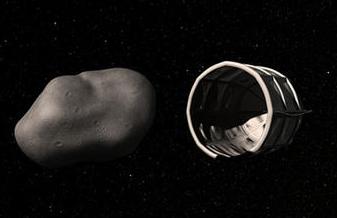 [5]By Oregon Small Business Association [6]
[5]By Oregon Small Business Association [6]
Seattle’s entrepreneurs have a bright new idea: mine asteroids for the valuable rare earth minerals they contain. The project has some heavyweights on board. Founders Eric Anderson and Peter Diamandis came up with the idea of selling space flights for private individuals, and their new venture has Google CEO Larry Page and James Cameron of Avatar and Titanic on board with them.
NASA, meanwhile, is spending over a billion dollars to bring back two ounces of an asteroid to earth. With that kind of money being spent on space mining, some scientists question whether Anderson and Diamandis’ project can possibly be cost-effective, even with platinum and gold at $1600/oz. Such questions don’t worry the two, reports the AP. “Before we started launching people into space as private citizens, people thought that was a pie-in-the-sky idea,” Anderson said. “We’re in this for decades. But it’s not a charity. And we’ll make money from the beginning.”
However, the newest player in the Pacific Northwest’s space industry seems likely to be mainly spending money at first. Now that investors have signed up, the company’s next step is to send out prospecting telescopes, small tubes two or three feet in length. Each one will be self-powered and simply cruise around scanning asteroids to determine whether they contain the valuable materials Diamandis and Anderson are looking for. Each telescope should cost less than ten million dollars.
According to current plans, larger-scale operations will begin within a couple of years, after the telescopes have identified a sufficient number of target asteroids. Those operations will be powered by liquid hydrogen and oxygen obtained by breaking down water that the company hopes to find on asteroids. Perhaps the system could be working by 2020.
One other thing: all the mining will be done by robots. Humans will not be involved except as mission control.
About ten percent of the asteroids are thought to contain valuable materials. But if those little telescopes work, we’ll soon know more.